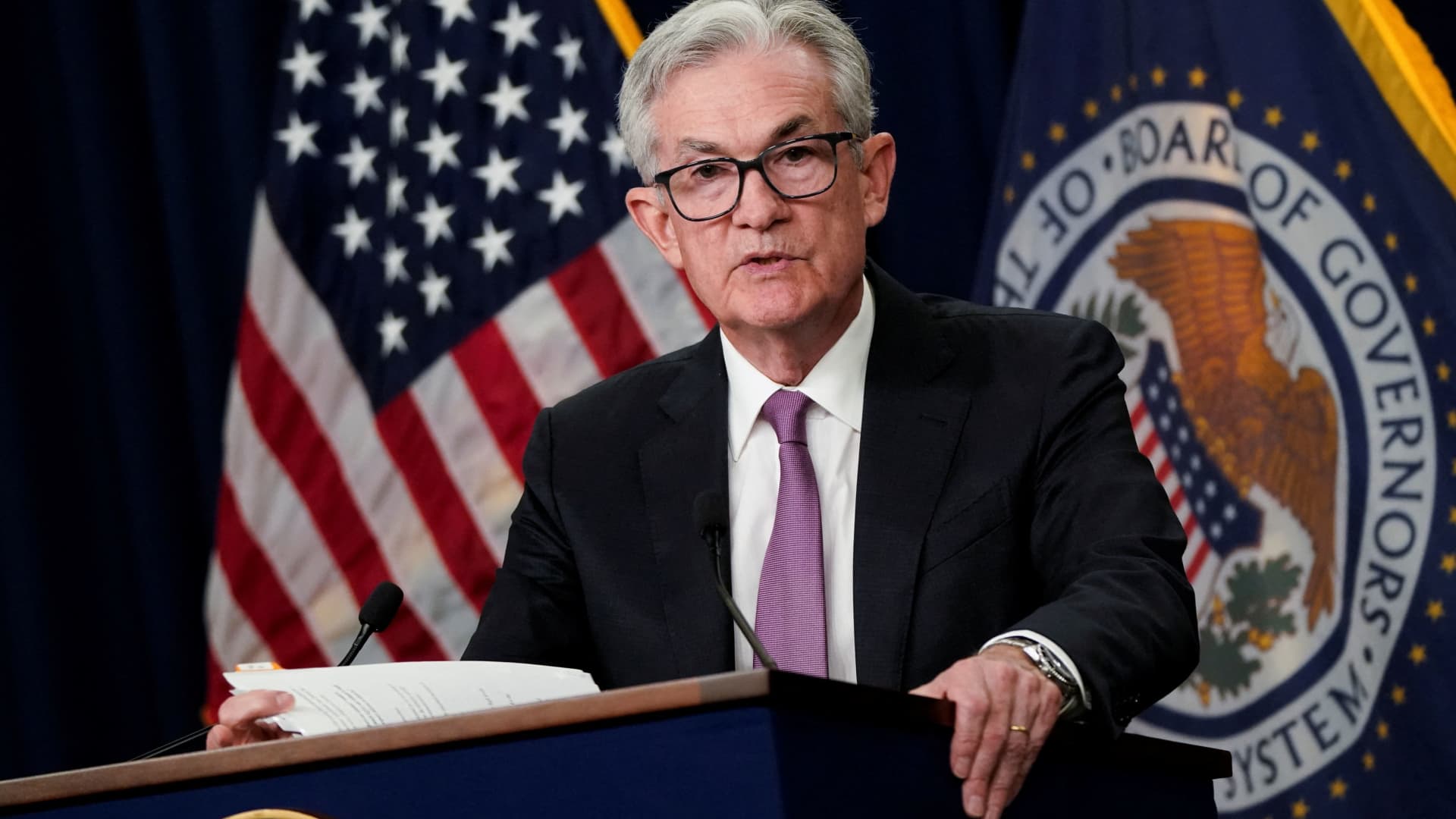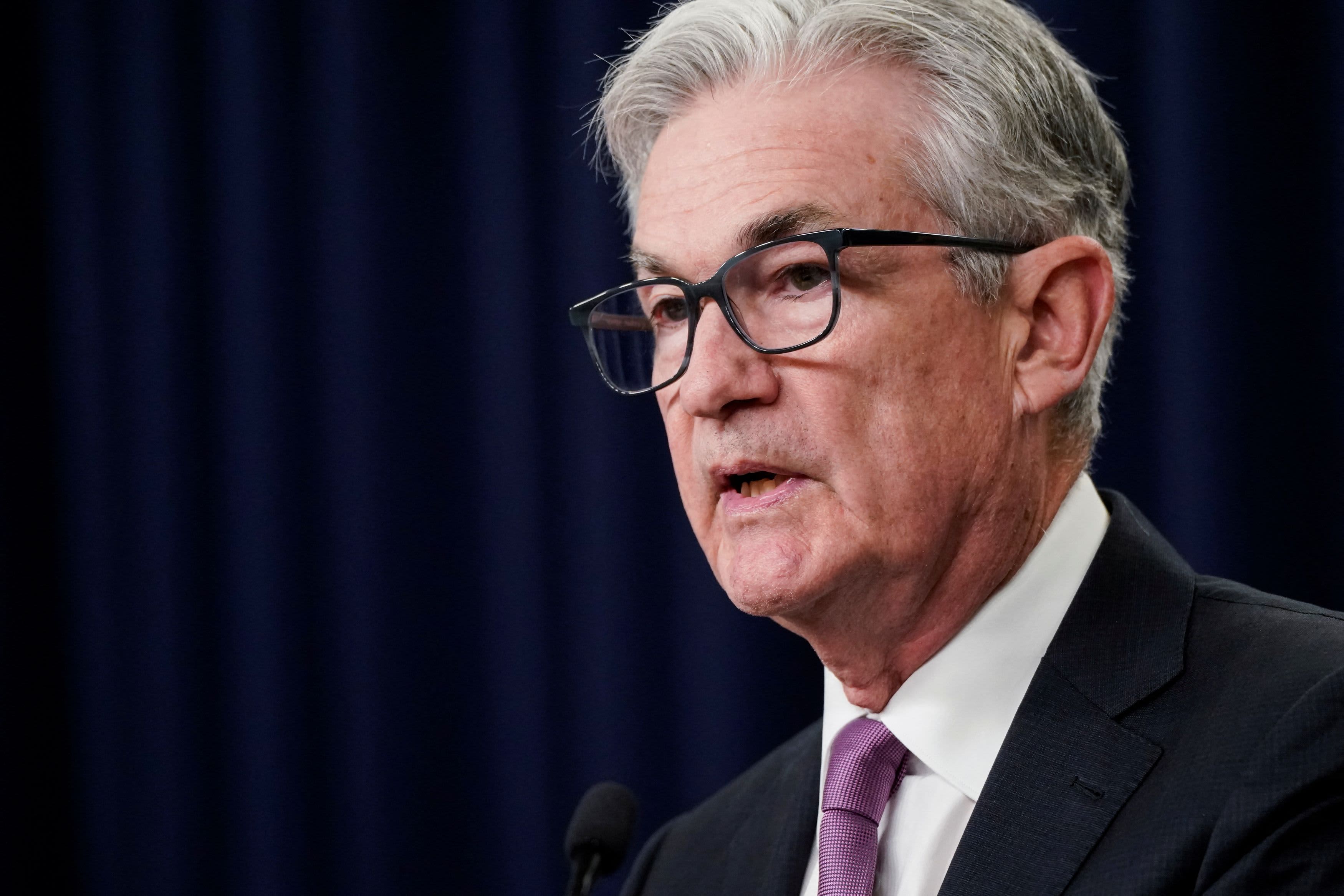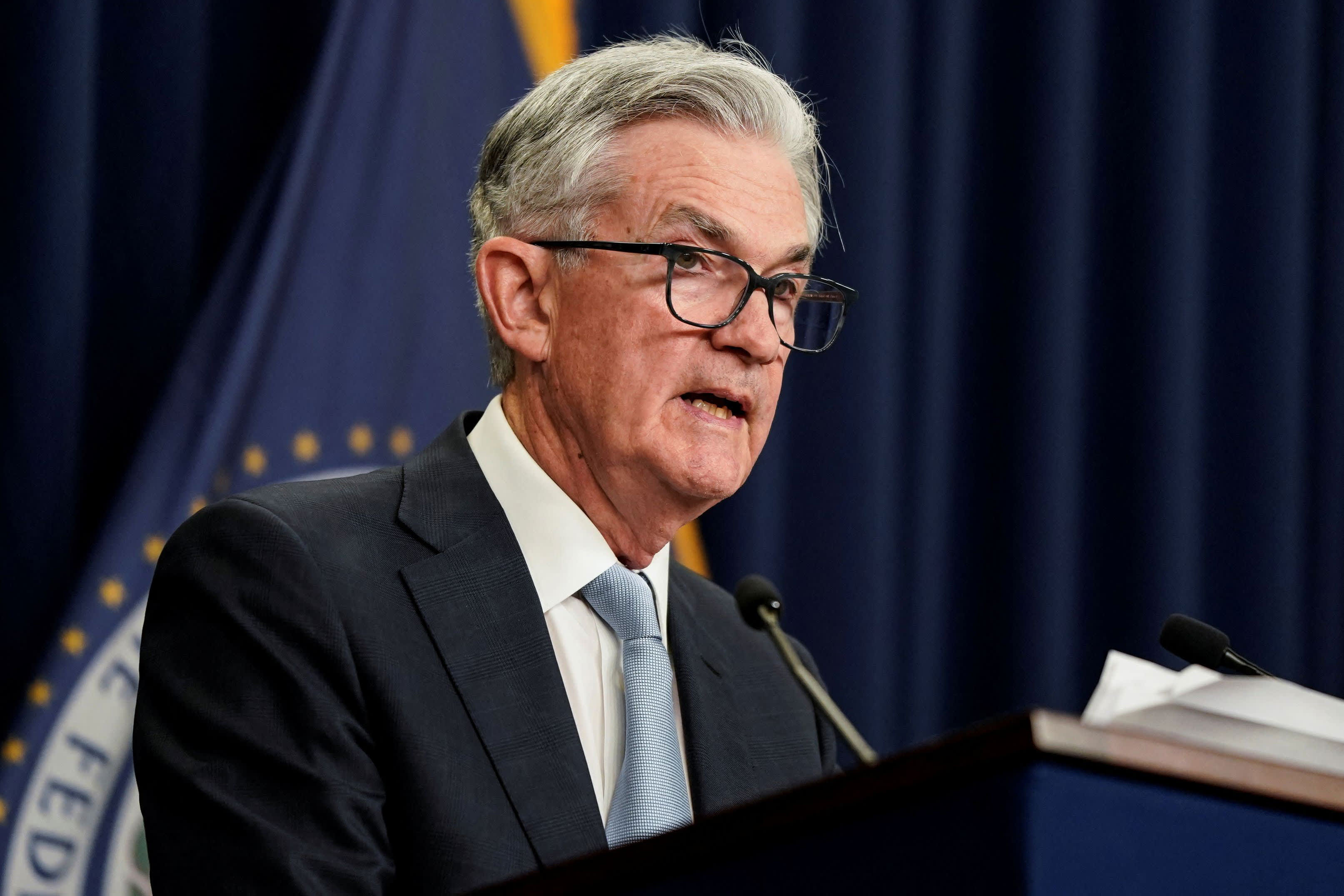It’s not what the Federal Reserve does, but what it says it could do in the future that will be most crucial when the central bank ends its two-day meeting Wednesday.
The Fed is expected to fire off another three-quarter point rate hike — its third in a row. It will also release quarterly forecasts for inflation, the economy, and the future path of interest rates Wednesday at 2 p.m. ET.
related investing news
The Fed’s projections are always important, but this time they are even more so because investors have been trying to game how high it will raise interest rates and how much officials expect their actions could affect the economy.
Fed Chair Jerome Powell speaks at 2:30 p.m. ET, and he is expected to emphasize the central bank will do what it takes to fight inflation and it is unlikely to reverse its rate hikes anytime soon.
“I think he puts up a bulletin board behind him that says ‘Inflation Has to Come Down,'” said Rick Rieder, BlackRock chief investment officer for global fixed income. “I think he’s going to talk tough.”
The new forecasts also come as the central bank moves into a rate hiking zone that some economists expect will be more restrictive and could more seriously impact the economy.
“It’s not what they do, it’s what they say. This is our first actual tightening road map. We had theoretical road maps up until now, but from the Fed’s point of view they’re crossing into a world of tightening. That’s an important thing,” said Diane Swonk, chief economist at KPMG.
The Fed has been lifting rates for seven months now, and will now be moving its target rate above what had been considered the neutral zone when inflation was low. Neutral is considered to be the interest rate level where Fed policy is no longer easy but not yet restrictive. The Fed has considered 2.5% to be neutral, and if it raises by three-quarters of a point, the fed funds rate will be in a range of 3% to 3.25%.
“This is really moving into restrictive monetary policy territory. We will be moving into no man’s land,” Swonk said. “We actually haven’t tightened policy to fight inflation since the early 1980s. Their goal is for a prolonged slowdown that grinds inflation slowly down and only gradually increases the unemployment rate. Whether they get there is another issue.”
Rate expectations jumped
Economists have been ratcheting up their forecasts for how high they expect the Fed to take the fed funds target before stopping the hikes. That level is called the terminal rate.
Expectations for Fed tightening increased dramatically in the past week, after a surprisingly hot August consumer price index report. Fed funds futures on Monday were pricing in a terminal rate of 4.5% by April, up from just around 4% before the inflation report was released last Tuesday.
The CPI rose 0.1% in August, while economists had expected a decline.
“The CPI number last week caused a lot in terms of market repricing,” said Peter Boockvar, chief investment officer at Bleakley Advisory Group. Stocks have been selling off, and bond yields shot higher after that report, with some short-term Treasury yields rising above 4%. The 10-year Treasury yield rose to 3.59% Tuesday, the highest since April, 2011.
The Fed’s last forecast, in June, estimated the terminal rate for fed funds to be at 3.8% in 2023.
Economists now expect the Fed to raise the terminal rate forecast above 4%. Citigroup economists said they could even see a scenario where it could go above 5% if the Fed needs to get more aggressive in its inflation fight.
Goldman Sachs economists, in a report, said they expect the median forecast of Fed officials to show the funds rate at 4% to 4.25% at year-end, with another hike to a peak of 4.25% to 4.5% in 2023. They then expect a cut in 2024 and two more in 2025.
Labor market pain
Swonk expects some of that pain to show up a jump in the unemployment rate to above 5% by the end of next year.
In June, the Fed forecast the unemployment rate would be 3.7% this year, the same level as August. Fed officials also expected unemployment to rise to 3.9% in 2023 and 4.1% by 2024.
“I think they’re going to be a little light on the unemployment rate. I’m in the camp that they have to really increase the unemployment rate to really make progress with inflation,” said Jim Caron, Morgan Stanley Investment Management’s head of macro strategies for global fixed income. “They’re in the camp of ‘We don’t have to do that.'”
Caron said the Fed’s rate hiking is a process that will increase the risk of recession.
“By increasing recession risks, you lower inflation risks because it’s all about reducing demand in the economy,” he said. “The sacrifice is slower growth in the future.”
There are some investors betting the Fed will raise rates by a full percentage point, but most economists envision a 75 basis point increase. A basis point equals 0.01 of a percentage point.
“I think 75 basis points is pretty much baked into the cake,” said Caron. “Now, it’s going to be about what they actually tell us … . They don’t want to do forward guidance, but the reality is people are still going to look at them for forward guidance.”
‘Out-hawk’ the market
Powell has taken on a more hawkish tone. He gave a short and direct speech at the Fed’s annual Jackson Hole symposium in late August, where he warned the economy could be in for pain from Fed tightening. The chair stressed that the Fed will use economic data to guide policy, and he has also emphasized that policymakers will hold rates at high levels until inflation eases.
“I think the message will be largely the same as Jackson Hole,” said Michael Gapen, chief U.S. economist at Bank of America. “It will be about getting policy restrictive, getting it there for a period of time with the overarching goal being price stability.”
Caron said it’s possible Powell could sound inadvertently dovish because the Fed has tilted very hawkish.
“I think a 75 basis point move is pretty darn hawkish, the third one in a row,” said Caron. “I don’t think they have to work very hard to ‘out-hawk’ the market.”



